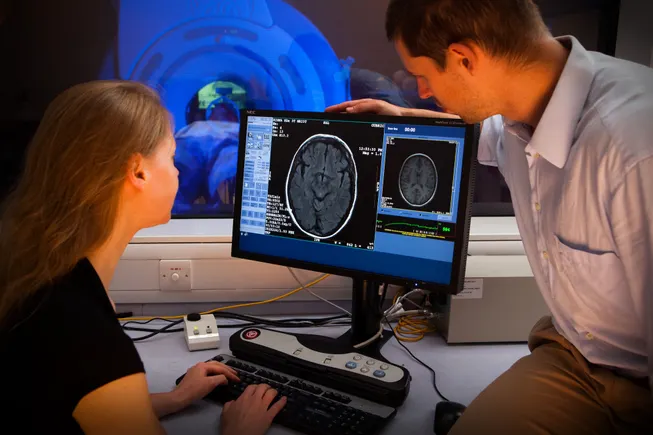Buying a House Sight Unseen? Read This First
Before you submit an offer on a home sight unseen, learn what precautions to take and how to do your due diligence from a distance. The post Buying a House Sight Unseen? Read This First appeared first on Redfin | Real Estate Tips for Home Buying, Selling & More.


Buying a house sight unseen – without stepping foot inside first – may seem risky, but for many buyers, it’s a practical and sometimes necessary choice. Whether you’re relocating across the country from San Francisco to Miami, pressed for time, or navigating a fast-moving market, buying a home without seeing it might make sense. But to avoid costly surprises, it’s essential to do your homework.
This Redfin article will guide you through everything you need to know before making an offer on a home you haven’t seen in person.
In this article:
- What does it mean to buy a house sight unseen?
- Why would someone buy a house without seeing it?
- Tips for buying a house sight unseen
- FAQs

What does it mean to buy a house sight unseen?
Buying a house sight unseen means making an offer (and in some cases, closing) without seeing the home in person. Instead, you rely on listing photos, 3D walkthroughs, live video tours, and online research to carry out the homebuying process remotely.
In some cases, buyers close on the home remotely and don’t see it until move-in day. In others, they may visit the property during the final walk-through right before closing.
Why would someone buy a house without seeing it?
Sight-unseen home purchases have become more common, especially in competitive markets or during relocations. Reasons for buying a house without seeing it in person can include:
- Long-distance relocation: Buyers moving across the state or country may not have time (or budget) to visit homes in person before making an offer.
- Competitive markets: In areas where homes are selling quickly, some buyers submit offers immediately after a virtual tour to avoid losing the home.
- Investment properties: Investors familiar with a specific market may purchase homes remotely based on the location, condition, and projected rental income.
- Buying new construction: With new construction homes, buyers often purchase based on floor plans and model home tours, especially when buying early in the construction timeline.
7 smart tips for buying a house sight unseen
1. Work with an experienced real estate agent you trust
Choose a real estate agent who knows the area inside and out, and who is experienced in helping remote buyers. They should be willing to tour homes on your behalf and be honest about red flags that might not show up on camera. Ask how many sight-unseen buyers they’ve worked with before.
2. Make a checklist of questions you can’t answer from the listing
Even with 3D tours, video walkthroughs, and floor plans, some details just don’t come through on screen. Before your agent conducts a live tour, create a checklist of specific questions you want answered about the home. These should cover anything you can’t see, smell, or hear from behind a screen.
Each buyer’s checklist will vary depending on your priorities, but the goal is the same: to get as close to an in-person experience as possible and avoid surprises after closing.
3. Schedule a live video tour
Once you’ve made your checklist, schedule a live video walkthrough so your agent can help fill in the gaps. Unlike pre-recorded videos or virtual tours, a live video lets you ask questions in real-time and get a better sense of how the home looks and feels.
Ask your agent to walk through slowly and cover details that don’t always make it into listing photos, such as:
- Inside closets, cabinets, and utility areas
- Flooring, baseboards, and ceilings for signs of wear or damage
- Window views and natural lighting throughout the day
- Noise levels inside and outside the home
- General condition of the yard, driveway, and nearby properties
If you know someone local that you trust, see if they can tour the home with your agent. A second set of eyes can help catch details you might miss and give you a more well-rounded view of the property.
4. Research the neighborhood
When you’re buying sight unseen, getting a sense of the neighborhood is just as important as understanding the home itself. A quiet residential street might look great in photos but turn out to be near a busy highway or under the flight path of a local airport. The more you know about the surrounding area, the more confident you’ll feel about your decision.
Start with tools like Google Maps and Google Street View to explore the immediate surroundings. Look for nearby schools, parks, businesses, and public transit. Zoom out to get a feel for how the neighborhood connects to the rest of the city.
Be sure to ask your agent for their honest take on the neighborhood. They can offer insights you won’t find in an online review, like whether the street feels active at night, if the community is well-maintained, or if new developments are planned nearby.
5. Get a home inspection
A home inspection is important for any home purchase, but especially when buying sight unseen. Hire a qualified inspector and ask for a full report with photos and detailed notes. Attend the inspection virtually if you can, and ask for clarification on anything that seems vague.
Consider additional inspections for pests, mold, radon, or foundation issues, especially in older homes or areas prone to certain risks.
6. Include contingencies in your offer
When buying a house sight unseen, contingencies are your safety net. These clauses allow you to back out of the deal or renegotiate without losing your earnest money deposit.
Important and commonly used contingencies you should consider include:
- Home inspection contingency
- Financing contingency
- Appraisal contingency
Even in competitive markets, it’s important not to waive these contingencies lightly – especially if you’re buying a house without seeing it first. Your real estate agent can help you structure an offer that protects you while still appealing to the seller.
7. Review the seller’s disclosure carefully
In many states, sellers are required to disclose known issues like mold, past flooding, foundation repairs, unpermitted work, or neighborhood nuisances. Review it carefully and ask questions about anything unclear. If a seller marks too many items as “unknown” or refuses to provide disclosures, consider it a red flag.
The disclosure isn’t a substitute for an inspection, but together, they help paint a more complete picture of the home you’re buying without seeing.
FAQs about buying a house sight unseen
Should you buy a house without seeing it?
It depends on your situation. Buying sight unseen can work well if you’re relocating, competing in a fast market, or purchasing new construction. But it’s not for everyone.
If you go this route, protect yourself by working with a trusted local agent, getting a thorough inspection, including key contingencies in your offer, and doing as much virtual research as possible.
What are the pros and cons of buying a house sight unseen?
Pros:
- Speed: Make quick offers in competitive markets.
- Convenience: Avoid travel and additional costs, especially for long-distance or relocation buyers.
- Access to remote markets: Invest or buy in areas you can’t easily visit.
- Tech-enabled tours: High-quality virtual tours and video walkthroughs help you evaluate homes remotely.
Cons:
- Limited sensory info: You can’t fully assess things like smells, noise, or natural light.
- Greater risk of surprises: You may overlook layout quirks or neighborhood issues.
- Heavier reliance on others: You need to fully trust your agent, inspector, and local contacts.
- Potential for buyer’s remorse: If the home doesn’t meet expectations, you may regret the purchase.
Can you back out of buying a house sight unseen?
Yes, but it depends on the terms of your purchase agreement. As long as your offer includes contingencies (like inspection, financing, or appraisal), you can usually back out without penalty if something unexpected comes up. For example, if a home inspection reveals major issues, or if the appraisal comes in low, you typically have the right to walk away or renegotiate.
How do I handle the final walkthrough if I can’t be there in person?
If you can’t attend, ask your agent to do a live video walkthrough or send detailed photos. The goal is to confirm the property’s condition hasn’t changed since your offer was accepted.
The post Buying a House Sight Unseen? Read This First appeared first on Redfin | Real Estate Tips for Home Buying, Selling & More.


















































































![A look at the jets flying high above the Paris Air Show [PHOTOS]](https://breakingdefense.com/wp-content/uploads/sites/3/2025/06/Rafale_02-scaled-e1750268097167.jpg?#)



























































